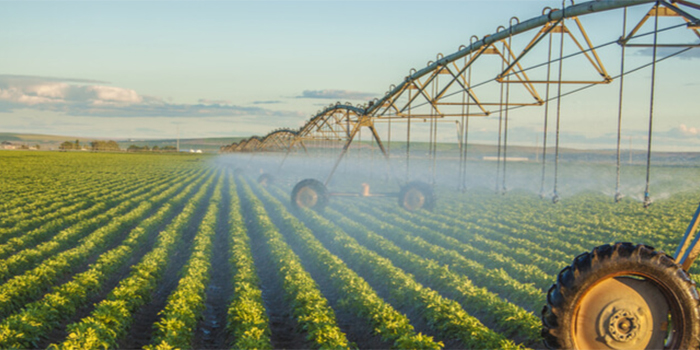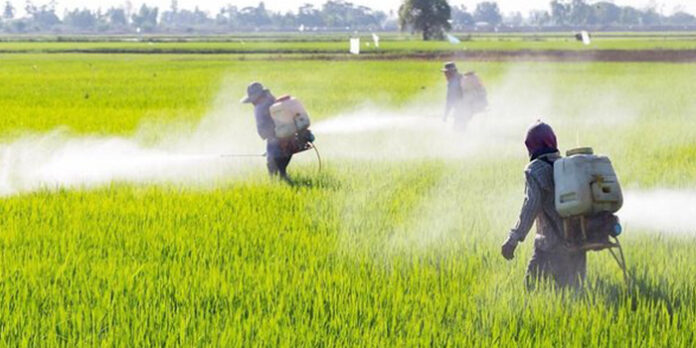In modern agriculture, the battle against pests, diseases, and weeds continues to be a critical challenge for farmers worldwide. To address these concerns, advanced crop protection chemicals have emerged as an essential tool in ensuring crop health and maximizing yields.
According to the Food and Agriculture Organization of the United Nations, about 40% of global crop production is lost due to the detrimental impact of plant pests and diseases. Every year, plant diseases accounted for damage of over $220 billion to the global economy, while invasive insects alone cause damages amounting to at least $70 billion.
Crop protection is essential for maintaining healthy and abundant yields. It involves using various methods, including advanced chemicals, to control pests, diseases, and weeds that threaten our crops. Essentially, these chemicals act as shields, protecting our plants from the relentless attacks of pests like insects, fungi, and even pesky weeds.
Crop protection chemicals have come a long way since their humble beginnings. Back in the day, farmers used to rely on traditional methods like handpicking pests or concocting homemade remedies. While these methods had their charm, they were often time-consuming and not always effective. Fortunately, the world of crop protection has seen some major advancements. Nowadays, we have a wide array of sophisticated chemicals specifically designed to target pests with remarkable precision. These advanced chemicals not only provide effective control but also minimize the damage to our crops and the environment.
The Food and Agriculture Organization of the United Nations (FAO) has estimated that in developing countries, approximately 80% of the required increase in food production to meet the demands of population growth will come from either enhanced crop yields or increased frequency of crop cultivation on existing land. Conversely, only 20% of the additional food production is anticipated to arise from the expansion of agricultural land. While pesticides serve as a crucial tool in preventing substantial crop losses, it is essential to acknowledge the ongoing apprehension regarding their impact on both human health and the environment.
When it comes to the environment, soil and water are particularly vulnerable to the effects of crop protection chemicals. We all know that healthy soil is the backbone of successful farming, and water is a precious resource that we simply can’t afford to waste. Thankfully, advancements in crop protection technologies have led to the development of chemicals that have a minimal impact on soil and water. Many of these chemicals are designed to break down quickly, reducing the risk of accumulation in the soil or contamination of water sources. This way, we can protect our crops without compromising the health of our environment.
The Role of Biotechnology in Crop Protection
Biotechnology has also made its mark in the world of crop protection. Through genetic engineering, scientists have created crops that are resistant to pests, reducing the need for chemical intervention. These genetically modified organisms (GMOs) have become valuable tools in crop protection, offering increased yields and decreased reliance on chemical pesticides. Several biotechnology-derived crops, which have been deregulated by the USDA and undergone food safety reviews by the FDA and/or the EPA, have been embraced by growers.
The Importance of Integrated Pest Management
While advanced crop protection chemicals can work wonders, they are not the only answer to pest control. Integrated Pest Management (IPM) takes a holistic approach, combining different strategies to keep pests in check. This approach includes practices like crop rotation, biological control, and mechanical methods. By integrating these methods with the use of advanced chemicals, farmers can achieve better and more sustainable pest management outcomes.
The Role of Regulatory Bodies in Crop Protection Chemicals
Regulatory bodies play a crucial role in ensuring the safety and effectiveness of crop protection chemicals. These organizations evaluate and approve the use of chemicals based on extensive research and data analysis. They set standards, conduct inspections, and enforce regulations to protect our crops, our environment, and our health.
In India, The Insecticides Act of 1968 serves as the governing legislation for the manufacture, import, transportation, sale, distribution, and use of pesticides. Its primary objective is to mitigate the potential risks posed to humans, animals, and other pertinent concerns. However, a new and more comprehensive act, known as the Pesticide Management Bill, is currently being proposed in India. This bill aims to supersede the Insecticides Act of 1968 and establish a more effective regulatory framework for the pesticide industry. Additionally, it seeks to address issues such as monitoring pesticide poisoning and providing compensation to victims. The Pesticide Management Bill is currently under development and awaits approval from the Standing Committee on Agriculture. Once approved, it will supersede the Insecticide Act of 1968.
In the United States, under the Federal Food, Drug, and Cosmetic Act (FFDCA), the Environmental Protection Agency (EPA) is responsible for setting tolerances, which are the maximum allowable levels, for pesticide residues in food. To ensure the safety of consumers, the FFDCA empowers the EPA to regulate the presence of pesticide residues in food products. These tolerances serve as legal limits, ensuring that the levels of pesticide residues in food do not exceed the established thresholds.

Recent Trends in Crop Protection Chemicals Market
In 2022, Syngenta emerged as the world’s foremost crop protection company, securing its position based on an impressive revenue of approximately $16.1 billion from pesticide sales. Similarly, Bayer CropScience achieved a remarkable feat in the same year, amassing a total revenue of $27.4 billion, encompassing both seed and pesticide sales.
In June 2023, Syngenta Crop Protection’s Seedcare business unveiled EQUENTO®, an innovative seed treatment that effectively combats a range of soil pests, empowering farmers to enhance the sustainability of their farming practices. Furthermore, in March 2023, Syngenta Group introduced “Shoots by Syngenta™,” a worldwide platform aimed at addressing the intricate challenges faced by the agricultural industry, fostering innovation, and promoting sustainable agricultural practices.
Frequently Asked Questions (FAQ)
1. Are advanced crop protection chemicals safe for human consumption?
Ans: Yes, advanced crop protection chemicals go through rigorous testing and regulation to ensure their safety for human consumption. They are approved for use by regulatory bodies, and the recommended application rates and safety precautions must be followed to minimize risk.
2. Do advanced crop protection chemicals harm the environment?
Ans: While crop protection chemicals can have an impact on the environment, proper use and adherence to regulations can minimize their negative effects. It is crucial to consider environmental risk assessments, use integrated pest management strategies, and explore sustainable alternatives to strike a balance between effective crop protection and environmental preservation.
3. Are there alternatives to chemical-based crop protection?
Ans: Yes, there are various alternatives to chemical-based crop protection. Integrated pest management (IPM) practices, biological controls, organic farming methods, and precision agriculture techniques are some of the sustainable alternatives gaining traction. These approaches aim to reduce reliance on chemicals and promote long-term crop health without compromising yields.
4. What does the future hold for crop protection chemicals?
Ans: The future of crop protection chemicals lies in sustainable and integrated approaches. Emerging technologies such as precision agriculture, biopesticides, and biotechnology offer promising solutions. Furthermore, there is a growing emphasis on promoting sustainable farming practices, reducing chemical usage, and developing eco-friendly formulations to shape the future of crop protection.
